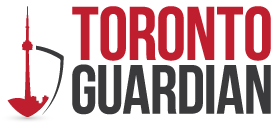Rogers’ C$11 billion deal with the NHL promises more games and fewer blackouts for Toronto fans. At the same time, the wider reach of hockey broadcasts could drive even greater interest in Ontario’s thriving online casino market.
When Rogers and the NHL agreed to a 12-year, C$11 billion broadcasting contract earlier this year, the headlines were about access. Starting in 2026, Rogers will control national rights across TV, digital and streaming. In practice, you won’t be running into the same blackout headaches, and watching will feel simpler whether it’s on the TV at home or streamed on your phone. In Toronto, where the Maple Leafs dictate the rhythm of the week, that extra access changes the way evenings are built around hockey.

Picture a Saturday on King Street or in a midtown pub. Screens are tuned to the Leafs, the noise rises the moment Auston Matthews touches the puck, and the chatter at your table is tied to what’s happening on the ice. With Rogers set to bring more of those games to national TV, nights like that stop being reserved for the biggest clashes; they become a regular part of the city’s week.
And in those moments, it isn’t just the action on the ice that holds your attention. Phones come out between periods, sometimes to track stats or glance at the odds being discussed on the broadcast. From there it’s only a short step into Ontario’s wider gaming space, where casino play dominates. The province’s regulated iGaming market is designed for exactly that kind of crossover, giving you access to licensed platforms that emphasise fairness, security and responsible play.
Where hockey meets Ontario’s casino market
If you’re curious about where people are spending their time, the best Ontario online casinos highlight the range on offer — from slots and table games to live dealer titles. Operators such as Royal Panda and 888casino are known for their large catalogues, while others like LeoVegas and TonyBet combine familiar casino play with user-friendly interfaces and local payment methods like Interac. All are licensed under iGaming Ontario, which means the experience is regulated and consistent with provincial standards. For a Leafs fan, it’s not unusual to dip into that digital space during an intermission, whether for a quick check of numbers or a few minutes at the virtual tables before the next puck drop.
Emerging trends you shouldn’t ignore
The numbers from Ontario’s iGaming reports show just how quickly the market is expanding. In the 2024–25 fiscal year, wagers hit C$82.7 billion, producing C$3.2 billion in gross gaming revenue, a 31% rise from the year before. What jumps out is the split: around C$69.6 billion of those wagers came from casino play, compared with C$11.4 billion from sports betting. Casino revenue was about C$2.4 billion versus C$724 million from betting, according to iGaming Ontario. That makes casinos the dominant force in Ontario’s online gaming mix, and it’s not even close.
Set that against hockey’s reach and the scale becomes clearer. When Sportsnet broadcast Game 7 of the 2024 Stanley Cup Final, the network drew an average minute audience of 7.55 million viewers across TV and streaming, the biggest broadcast in its history. When millions of Ontarians are watching the same game at the same time, the crossover potential is obvious: the casino market is already in place, waiting for those viewers to look down at their phones.
Broadcasts made for multitasking
Sportsnet has leaned into gambling content with shows like SN Bets, weaving odds and insights into pre-game panels and intermission features. With a larger pool of national games, you’ll be seeing more of that style of content. It isn’t a hard sell. A commentator might point out expected goal totals, or a graphic could compare shots on target with betting lines. For you, it feels like part of the broadcast, but for operators it’s a doorway into the wider gambling ecosystem. And given the way Ontarians spend once they’re inside, casinos capture most of the attention.
That doesn’t mean you’re bombarded by these advances in technology. The approach is softer — data, trends and quick references rather than slogans. But over time, those cues become familiar, and familiarity is often what nudges people from being spectators to being players.
Toronto’s unique position
No Canadian city consumes hockey like Toronto. The Leafs remain the NHL’s most valuable franchise, valued at more than C$5.5 billion, and their games drive national conversation. When Rogers increases its national windows, the effect is magnified here more than anywhere else.
And the city’s viewing culture and engaged community make the overlap more obvious. In a packed condo lounge near the waterfront or a neighbourhood sports bar in the east end, fans watch together but often with a phone in hand.
A horizon stretching to 2038
The Rogers-NHL contract runs until 2038, long enough to shape an entire generation of hockey habits. For you, that means reliable access to the games you care about. For broadcasters, it means a platform stable enough to invest in new camera angles, streaming features and integrated data. And for Ontario’s casino industry, it means a long runway of engaged viewers who already link hockey with digital entertainment.
You may not think of any of this when the Leafs score in overtime or the crowd roars inside Scotiabank Arena. But every time the game is easier to watch and share, the connection with online play gets a little tighter. That is how a television contract signed in April can end up influencing how you spend your Saturday nights in Toronto years into the future.

